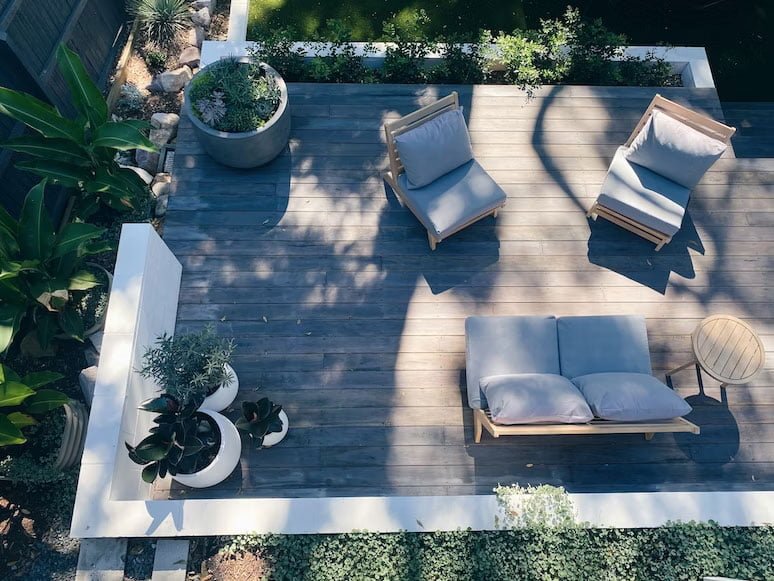Share This Article
Table of Contents Show
Landscaping is more than just picking pretty flowers to fill up a flowerbed in the back garden. Instead, it is about transforming your garden into a picturesque utopia that can be enjoyed all year round.
Minimising human impact on the thriving ecosystem that will call this area home is essential, so creating a low-maintenance space is ideally suited for the environment. By properly designing your vision, you will not hesitate to grab your hedge trimmers and work towards your dream.
Addresses Goals Early
Any project you undertake starts from an end goal and vision you hope to achieve. To get there, many different resources, investments, inputs and constraints must be navigated at various points throughout the journey.
In order to cover all the possible outcomes and consequences of your undertaking, setting out your goals and expectations at the beginning will help you ascertain what you want and the best path to get there. In addition, it will help you maintain your budget and schedule far better when known from the beginning.
Saves Time & Money
When taking on a new project, especially one requiring a lot of time and money, you will quickly find yourself over budget when you don’t stick to a plan. You are at risk of buying things you don’t need or can’t use.
To avoid wasting valuable resources, draw up a structured game plan with built-in leniencies in case of any unexpected expenses or challenges you may encounter. This will prevent you from going off schedule and allow you to focus on your planned design.
Supports Local Eco-Systems
Your garden is more than just a place for you and your family to retreat to enjoy good weather or relax after a long day. It is an eco-system supporting many different varieties of wildlife, insects and flora.
The amount of light each section gets, the exposure to wind and rain, and the location of different plants to each other all influence the needs of the foliage itself as well as the fauna that call it home. Therefore, these factors must be appropriately researched and accommodated to ensure they remain stable and well-supported.
Prioritises Low Maintenance
A large, sprawling and lush garden is great in theory, but many homeowners and potential homeowners are unwilling to invest in the maintenance needed to keep it looking its best. Choosing something that is low-maintenance is not only more sustainable, but it is also forward-thinking.
Trends have shown that potential homeowners are often deterred from buying homes with gardens that require more effort unless they are enthusiastic gardeners themselves. This will significantly reduce potential buyers should you choose to sell in the future.

Increases Property Value
While property valuation incorporates many different elements, it is a common belief that a beautifully designed garden can increase the overall value of your home by a massive 25%. To significantly impact the real estate value takes time and dedication, making it an investment you need to be fully dedicated to.
Starting with a well-set plan that can be broken into smaller jobs makes this daunting taste more feasible and achievable in the long term.
Considers Environmental Challenges
Regardless of where you live in the world, your weather and environment likely present unique challenges when it comes to gardening. It can be sun exposure, soil conditions, wind, varying micro-climates and precipitation.
These elements will greatly influence what you can grow and sustain, either from season to season or year-round. A proper design will let you do the necessary research into the lifecycle of different flora to choose the best options to fit your vision.
Breaks Up Large Spaces
When you have a large garden, it can be challenging to create more private areas for intimate outdoor dining opportunities out of the view of your neighbours. Instead, use landscaping features to break up the large spaces into smaller, inviting zones you can use for different outdoor activities.
You can use trees or hedge foliage to create a line of privacy while blocking out some noise from the road or neighbours. Additionally, you can build a pathway through the garden, leading to a seating area, naturally dividing a large block of garden space.
Includes Pre-Existing Requirements

When you design and build a home, there are local, provincial and federal regulations you must conform to. This is no different when creating your dream landscape. The good news is that consulting with professionals will mean you fully understand the requirements you need to meet to remain on the right side of the law.
A proper design blueprint will include other influencing factors like property lines, easements and buried utilities your property may have. Trying to navigate these requirements can become complicated and overwhelming without proper planning.
Prevents Possible Flooding
Without a well-set design plan, your garden can quickly turn into a muddy, flooded mess the moment the rainy season arrives. It can damage plants and furniture and potentially threaten your home’s foundation. Furthermore, it makes the entire space unusable, ruining any work you have invested in your gardening project.
With the right design, you can direct stormwater and runoff into a designated drainage area, allowing your garden to benefit from the rain without being completely destroyed.


